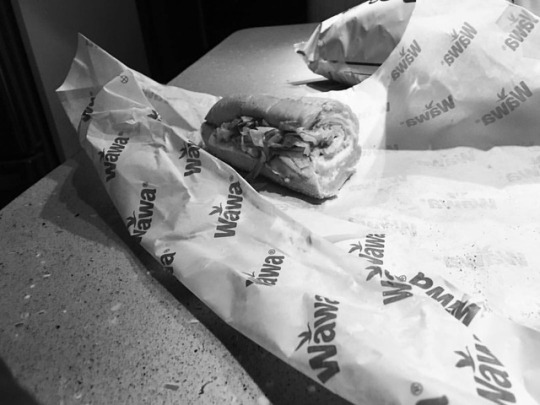#wawaters
Photo

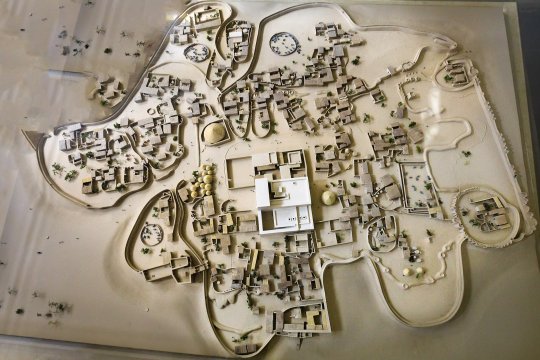
When is the first evidence of an African empire?
I will have to go with Kerma, below I’ll explain why .
The general political situation in the Neolithic Southern Nile Valley (left), pre-Kerma around c. 4th millennium BC (centre), and a Medjay warrior depicted on a bucranium (cattle skull) from Mostagedda, Middle Egypt, (right), illustrating the use of Hieroglyphs among the southern populations living among the Egyptians
See where Kerma is in the purple ? it would take all those other polities creating a large Empire to be known as Kush.
So if by Empire we are talking about a state gobbling up multiple states, many may think Egypt because the land area was large, but Kerma at it’s height took over all the surrounding polities under a unified front, I guess one could argue the same for the early unification of the upper and Lower Egypt, but these were multiple entities from as far away as Punt even.


The standing remains of a c. 4000 year old monument. The Western Deffufa, a massive mud brick temple in the center of Kerma, capital of the first Kingdom of Kush.
The rise of Kerma (c. 2500 BC) sees the absorption of these tribes into a strong centralised state, know as Kush, which ended up rivalling Egypt itself. This period sees some of the first monumental construction activities in Sudan, organised labour, advanced metallurgy, cross-continental trade networks and the earliest use of Egyptian hieroglyphs as well as being embroiled in violent conflict with their northern neighbour, annexing lower Nubia and raiding as far north as Thebes. A thousand years after its establishment, the Kingdom of Kerma was conquered by the New Kingdom. 500 Years of occupation blurred the lines between Kush and Egypt, as the material culture of the two countries became nearly indistinguishable.

Aerial view of a historic reconstruction of the central district of the Royal City of Kerma, somewhere around c. 2050 - 1750 BC, showing the Western Deffufa, a massive mud-brick religious monument, still standing today at 18 meters in height , surrounded by elite residential area's. This central area was walled with massive earthen ramparts with bastions. A large necropolis, shrines, palaces and agricultural villages extending north and south towards the fertile plain of the Nile surrounded this district.
The rise of Kerma (c. 2500 BC) sees the absorption of these tribes into a strong centralised state, know as Kush, which ended up rivalling Egypt itself. This period sees some of the first monumental construction activities in Sudan, organised labour, advanced metallurgy, cross-continental trade networks and the earliest use of Egyptian hieroglyphs as well as being embroiled in violent conflict with their northern neighbour, annexing lower Nubia and raiding as far north as Thebes. A thousand years after its establishment, the Kingdom of Kerma was conquered by the New Kingdom. 500 Years of occupation blurred the lines between Kush and Egypt, as the material culture of the two countries became nearly indistinguishable.

The following is important as to why I think Kerma was the first Empire.
The El Kab inscription
The tomb belonged to Sobeknakht, a Governor of El Kab, an important provincial capital during the latter part of the 17th Dynasty (about 1575-1550BC).
The inscription describes a ferocious invasion of Egypt by armies from Kush and its allies from the south, including the land of Punt, on the southern coast of the Red Sea. It says that vast territories were affected and describes Sobeknakht’s heroic role in organising a counter-attack.
The text takes the form of an address to the living by Sobeknakht: “Listen you, who are alive upon earth . . . Kush came . . . aroused along his length, he having stirred up the tribes of Wawat . . . the land of Punt and the Medjaw. . .” It describes the decisive role played by “the might of the great one, Nekhbet”, the vulture-goddess of El Kab, as “strong of heart against the Nubians, who were burnt through fire”, while the “chief of the nomads fell through the blast of her flame”.
The discovery explains why Egyptian treasures, including statues, stelae and an elegant alabaster vessel found in the royal tomb at Kerma, were buried in Kushite tombs: they were war trophies
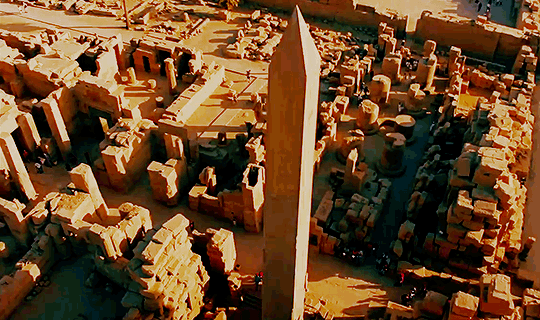
#ta seti#nubi#kemetic dreams#north africans#north africa#northeast africa#punt#kerma#egypt#ta meri#kemet
40 notes
·
View notes
Text
The defeat of the Hyksos was the result of a national rising of the Egyptians who, once they had expelled the Hyksos from the Nile valley, turned their energies southward to reestablish the military occupation of Nubia that the Hyksos invasion had disrupted. Under Thutmose I (reigned 1493–c. 1482 BCE) the Egyptian conquest of the northern Sudan was completed as far as Kurqus (also spelled Kurgus, Korgus), about 30 miles (50 km) south of Abū Ḥamad, and subsequent Egyptian military expeditions penetrated even farther up the Nile. This third Egyptian occupation was the most complete and the most enduring, for, despite sporadic rebellions against Egyptian control, Nubia was divided into two administrative units: Wawat in the north, with its provincial capital at Aswān, and Kush (also spelled Cush) in the south, with its headquarters at Napata (Marawī). Nubia as a whole was governed by a viceroy, usually a member of the royal entourage, who was responsible to the Egyptian pharaoh. Under him were two deputies, one for Wawat and one for Kush, and a hierarchy of lesser officials. The bureaucracy was staffed chiefly by Egyptians, but Egyptianized Nubians were not uncommon. Colonies of Egyptian officials, traders, and priests surrounded the administrative centres, but beyond these outposts the Nubians continued to preserve their own distinct traditions, customs, and crafts. A syncretistic culture thus arose in Kush, fashioned by that of Egypt to the north and those of African peoples to the south.
instagram
0 notes
Text
Dateline Zürich: The Essence Of WAWAT
by Maria Bratikova
I’ve been occupying my scheds with doing (or, more properly, going to a fiesta) Wawat since the day after the local elections. I like this tradition – it is a combi of celebrating, giving thanks and re-acquainting one’s self with the folks. It is a baranggay people thing, camaraderie, oneness, community. Going to the head of a line to get your portion of the blessings – age…
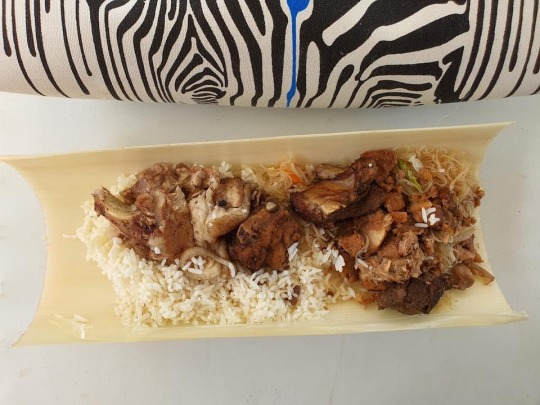
View On WordPress
0 notes
Photo

Bareng Bi Wawat :) @ratnaambuu @febrs_ (at Cigending, Jawa Barat, Indonesia) https://www.instagram.com/p/CrYZ51tPpKK/?igshid=NGJjMDIxMWI=
0 notes
Text
YouTube पर "Amar yadav santosh sadiya | Rassa chuch wawat he | Amar yadav cg full song | santosh sadiya vlog" देखें
youtube
1 note
·
View note
Photo

Blue mermaid today #mermaids #mermaidtail #bluemermaid #reallfemermaid #imamermaid #finfolktail #thisiswa #wabeachs #wawaters #perthmermaids #perthmermaid (at South Beach Fremantle)
#imamermaid#reallfemermaid#wabeachs#wawaters#mermaids#thisiswa#finfolktail#perthmermaids#perthmermaid#bluemermaid#mermaidtail
14 notes
·
View notes
Text
Rudi Tyyanda

Rudi Tyyanda adalah Seorang Pria Berkebangsaan asal Tanah air Negara Indonesia. Berdarah adat budaya suku Sunda. Dia lahir dikota Garut pada Tanggal 27 (Hari Selasa/Tuesday) - 04 (Bulan/Month April) - Tahun 1988. Ber-Zodiak Bintang Taurus (Simbol Sapi Jantan) atau Shio/Naga (Dragon) elemen Tanah (Earth). Ia bergerak dan berkarir didunia Entertainment dibidang Kesenian, Multimedia, dan Broadcasting. Ia Berprofesi sebagai Freelancer, Photographer, Videographer, Design Grafis, Video Editor, & Content Creative. Selain itu, Beliau juga merupakan Saudara Kandung Kakak Pertama/Tertua dari Aldo Muziana, & Satria Sukma Sejati (Bangsat/Satrio Sukmo Senjoto/Outlaws98). Anak Kandung Pertama dari Bapak Toto Muhtar Saepuloh (Alm.) & Ibu Wawat Rosmawati. Saat ini Ia berdiam diri/tinggal di domisili Bandung Barat daerah Kota Baru Parahyangan tepatnya/detailnya di Alamat : Jl.Sodong Kp.Sodong RT/RW/002/015 Kel/Desa.Kertajaya Kec.Padalarang Kab.Bandung Barat Prov.Jawa Barat (West Java) ZIP Code Post.40553 Indonesia.
5 notes
·
View notes
Text


medyo masakit ulo ko naambunan ng tubig ulan kanina pero naligo din naman ako kaagad, pero sumakit pa rin nga ulo ko, tapos ito napa selfie yung wala sa itsura na masakit ang ulo pero nasakit talaga 😊😄😅 tska tinitingnan ko talaga sarili ko kung mukhang may sakit 😂😅 nag wawater naman na sabi nga Mimiyuuuh Drink your water !!!!! pag di ko na kaya mag med later...
Maulan Malamig na Gabi sa lahat 😊
#Me #selfiepa #sakitulo #SKL
Dec. 26, 2020 07:37 pm
2 notes
·
View notes
Photo


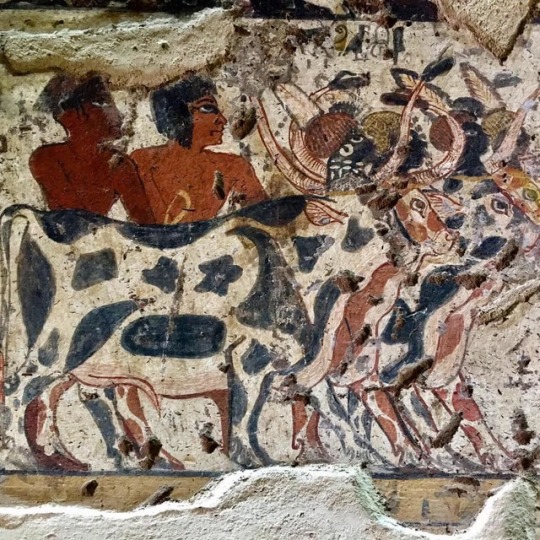

The Kushite conquest of Egypt was the reversal of an earlier situation in which Egypt had conquered the territory to the south of its border. The tomb of Tutankhamun’s man in Kush (the ‘viceroy’ or literally ‘King’s son of Kush’), Huy, features some incredible scenes of the tomb-owner leading a procession of people from the lands to the south including Kush, Miam and Wawat bringing tribute to pharaoh, comprising gifts of cattle, a giraffe and loads of GOLD. TT40, tomb of Huy.
#egypt#ancient egypt#kemetic#egyptology#kemet#archaeology#history#kush#kushite#black pharaohs#noble tombs
224 notes
·
View notes
Text

Why do people claim that ancient Egyptians and Nubians are the same if ancient Egyptians depicted themselves very different from Nubians?
Here we go again!!Only people with cosmetic and Hollywood perception in History carry the misconception of the identities of the Upper Nile Valley people.The term Nubians is highly misunderstood by many. Nubia was never a Kingdom but a region in the Upper Nile Valley. This region included part of Southern Egypt (Upper Egypt, Aswan and Edfu), Wawat, Blemmyes, Kerma, Kush, Nobatia, Makuria, Alodia, Yam, etc….Today the region remains in Southern Egypt and Northern Sudan. There was never a Kingdom called Nubia in the Historical developments of the Nile Valley. So when people with shabby knowledge categorize some people as Nubians, they are mainly being Fallacious.The Lower Nubia region was the Cradle of the Nile Valley Civilization that birthed ancient Egypt. It was the expanse responsible for the Mesolithic and Neolithic Cultural Technocomplexes of the Nile Valley Civilizations.The Tasian, Badari, A-Group, Abkan, Naqada Cultural Technocomplexes were all part of the Nubian Neolithic Traditions which emerged from the Qadan and Sebelian Cultural Technocomplexes of the Mesolithic period.What most people don't know is that according to the Prehistorical Timeline of Egypt, the earliest settlement of people into Egypt came from Wadi-Halfa, Wadi-Halfa is a region in Northern Sudan. Which explains why Wadi-Halfa and Nabta Playa both in the Lower Nubian region of Southern Egypt are known by Academia as significant Prehistorical factors in the Timeline of the Nile Valley Civilization.Also many people are unaware that the earliest Pharaonic Traditions arose from the Lower Nubian region of Southern Egypt.The earliest representations of royal power in Egypt: the rock drawings of Nag el-Hamdulab (Aswan) | Antiquity | Cambridge Core
Also many people don't know that Northern Egypt, what many unscholarly people perceive as the ancient Egyptian Civilization, only became part of the ancient Egyptian Kingdom, after the Southern Kingdom of Egypt conquered and occupied the Northern Delta region around 3,150 BC. Prior to 3,150 BC, ancient Egypt was a Southern Kingdom which included part of the Lower Nubian region of Aswan , Abydos, Hierankoplis, Thinis….
Rather than using the term Nubian or Nubia, which was only a geographical expanse and not an ethnicity of sociocultural identifier. It is Important to specify the people whom you refer to by their ethnicity or ancient sociocultural heritage.
For example, you could say Kushites vs Ancient Egyptians, or Blemmyes vs Ancient Egyptians. You could also say Yammites vs Ancient Egyptians. These terms are more specific and represents a people ethnically different from ancient Egyptians.
Using the term Nubian or Nubia is fallacious. Ancient Egypts Historical developments began from the Lower Nubian region of the Nile Valley.
Take a look of the Mesolithic Expanse of Egypt during the Mesolithic period vs the Map showing the region of Lower Nubia.

#african#nabta playa#nubian#nubia#sudan#ta seti#ta meri#northeast africans#afrakan#kemetic dreams#afrakans#brownskin#afrakan spirituality#african culture#africans
11 notes
·
View notes
Text
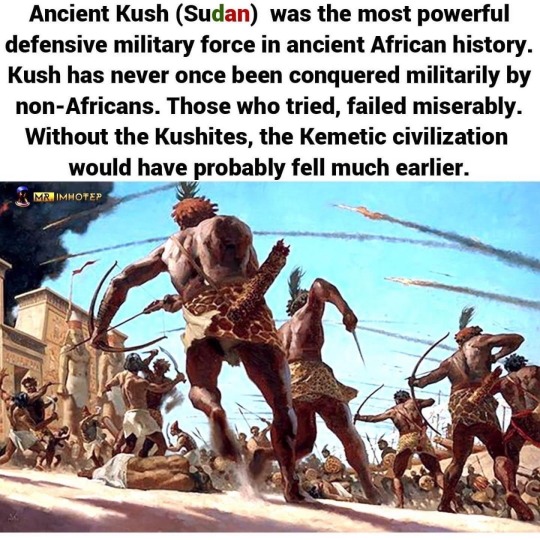
That's why we call it Land of the ancestors. Without Sudan and the great lakes region, there is no Kemet. The men and women of Wawat, Ta-seti or Kush have always been strong. They were known for their skills with bows and their strength. They followed the laws of Ma'at and loved Africa, their land. They knew that they were the protectors of something bigger than just a country. The Black African culture is Nubian in origin, so, they represented all the people of Africa. They protected all of us. That is why, they could not fall, it was too important. That pride can still be seen among the southern groups and in south Sudan. They know who they are and we love them for that.
.
The ancestors loved what God gave to their ancestors. What God gave to them. And they were always ready to fight for it. No foreigner could come and tell them who they were and what they should do on their own land because they knew who they were. And they never felt the need to take what did not belong to them without God's permission. Because they always did what was right (Ma'at). Their actions were not motivated by greed, but by justice.
.
We must be proud of Sudan.
2 notes
·
View notes
Text

Excited ako sa birthday gift ng mahal ko yeeeey hahaha di ako artistic pero lately sobrang naamaze ako sa mga tiktok videos tungkol sa pag wawater color kaya nainggit ako hahahaha
1 note
·
View note
Text
So, base on experience kay mama na naospital para tanggalin yung gal stones niya. Simula ngayon on mag wawater na talaga ako lagi at iiwasan ang maaalat na pagkain pati softdrinks. Okay lang yung minsanan. Mahirap maospital ngayon dahil mahirap ang buhay. Feeling ko nanganganib din ako kasi sobrang irregular mens ko plus lagi sumasakit balakang ko. Hays. Pero wag naman sana. Thank you Lord for successful operation ni mama.
1 note
·
View note
Photo

(Ancient Egyptian) “18th Dynasty” AFRICA: Nubia, ancient region in northeastern Africa, extending approximately from the Nile River valley (near the first cataract in Upper Egypt) eastward to the shores of the Red Sea, southward to about Khartoum (in what is now Sudan), and westward to the Libyan Desert. The kingdom of Nubia is located alongside the Congo river, thereby left unto Egyptian reign of dynasties. However, Nubia is traditionally divided into two regions. The southern portion, which extended north to the southern end of the second cataract of the Nile was known as Upper Nubia; this was called Kush (Cush) under the 18th-dynasty pharaohs of ancient Egypt and was called Ethiopia by the ancient Greeks. Lower Nubia was the northern part of the region, located between the second and the first cataract of Aswān; this was called Wawat…. KNOWN FACT!
45 notes
·
View notes
Photo

Swimming the depths below my pod at @merconaustralia Photo by @janet_obrien Tail by @finfolkproductions #underwaterphotography #underwatermermaids #reallifemermaid #oceanmermaid #merconaustralia #mercon2017 #wawaters #busseltonjetty (at Busselton Jetty)
#oceanmermaid#underwatermermaids#busseltonjetty#merconaustralia#mercon2017#wawaters#reallifemermaid#underwaterphotography
9 notes
·
View notes
